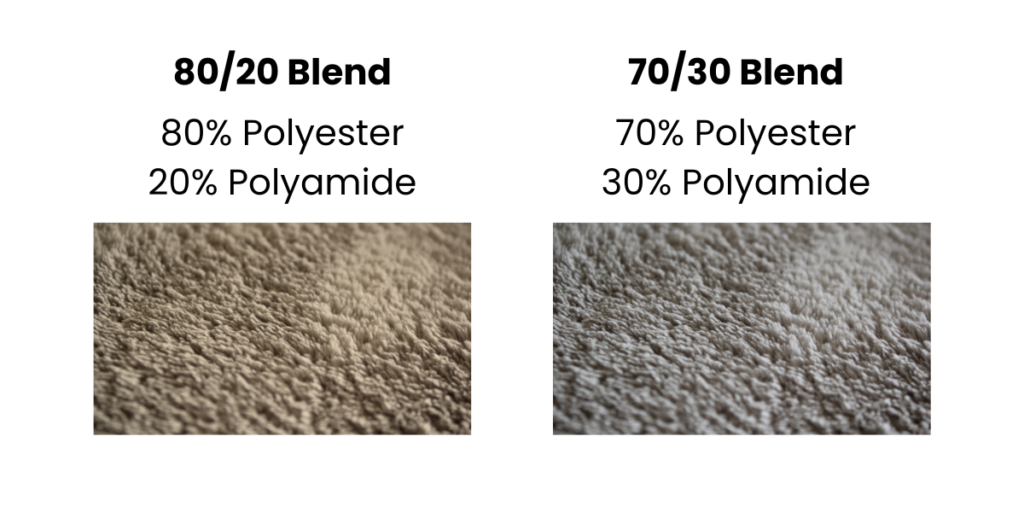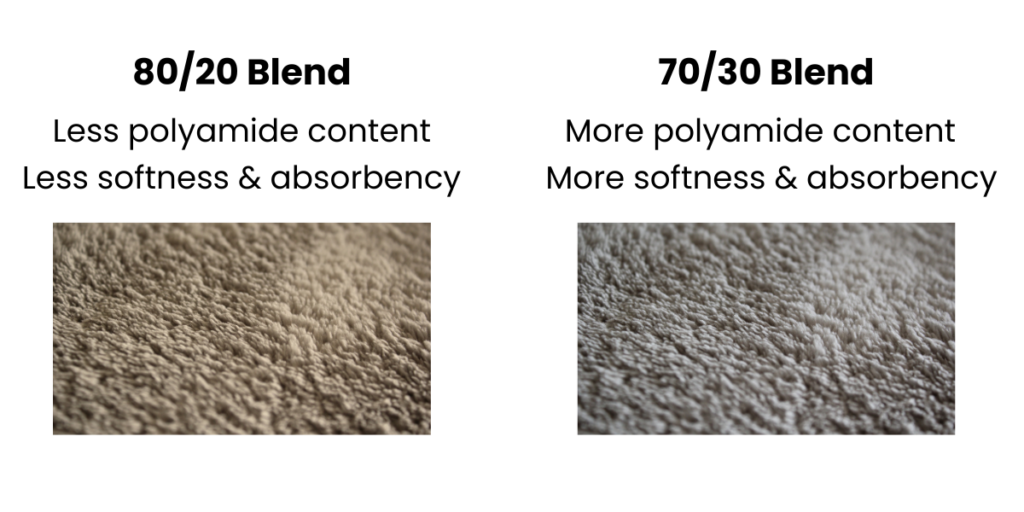If you’ve ever been shopping for microfiber towels, mitts or applicators for car detailing, you’ll often see the “blend” being listed in the description, with the two most common being 70/30 and 80/20. But what does it mean? And why does it matter?
Microfiber Blends Explained
Microfiber is a synthetic material formed from two main polymers:
- Polyester
- Polyamide
The blend of a microfiber towel refers to the composition of polyester and polyamide.
There are several different blends available, with the most common being 80/20 and 70/30, however there are other options such as 90/10, 85/15 and 75/25.
These numbers all refer to the percentages/ ratio of polyester and polyamide that the microfiber is made up of.
- The larger number refers to the percentage of polyester
- The smaller number refers to the percentage of polyamide
For example, a microfiber towel with a 70/30 blend is composed of 70% polyester and 30% polyamide.

Differences Between Blends
Okay so now we know that the different blends contain different ratios of polyester and polyamide, let’s discuss what affect this actually has on the performance of the towel. Here we’re really talking about the difference between having more polyamide vs more polyester.
In comparison to polyester, polyamide is:
- Softer
- More absorbent
- More expensive
A 70/30 microfiber blend has more polyamide than an 80/20 microfiber blend. This means that the 70/30 microfiber is softer and more absorbent compared to the 80/20 microfiber, but also more expensive.

Looking for the best microfiber towels? Check out my list of recommended microfiber towels for every detailing task e.g. drying, glass cleaning, polish removal, etc.
Are 80/20 Microfiber Towels Inferior?
A microfiber towel with an 80/20 blend will not be as soft or as absorbent as towel with a 70/30 blend. For delicate paintwork, a 70/30 blend will be the safer option as it is less likely to cause marring.
That doesn’t mean that a 70/30 towel is always necessary. On harder paints (e.g. Audi, Volkswagen, BMW vehicles) an 80/20 towel is unlikely to cause any marring if used correctly. It’s only on softer paints (e.g. Porsche, and most Japanese vehicles) that a 70/30 microfiber towel is more necessary.
Choosing a cheaper 80/20 microfiber towel for jobs such as interior cleaning, engine bay cleaning, or applying trim dressings makes a lot more sense here as the extra softness of a 70/30 blend would provide no real benefit. It’s only on paintwork that I consider the blend to be more important, and in truth the difference in softness between these two particular blends isn’t huge.
Other Factors to Consider
You shouldn’t just look at the blend when buying a microfiber towel for car detailing, but also consider the other variables which make different microfiber towels suited to different tasks.
- What kind of weave does the towel have? Twist loop? Circular knit?
- What is the gsm of the towel?
- What are the borders like? Are they edgeless? How are they cut?
- Does the towel have tags?
Check out my complete guide to microfiber towels for car detailing which includes what to look for and a list of my recommended towels for each task e.g. glass, drying, etc.

